What Does Cauliflower Taste Like?
When you buy through our links, The Breslin may earn an affiliate commission. Learn more
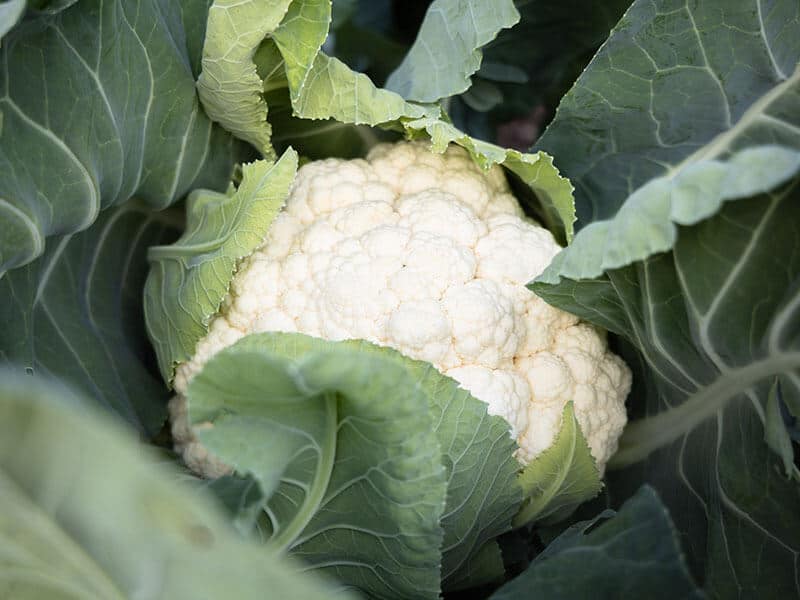
What does cauliflower taste like? Cauliflower is such a popular veggie, but can you clearly describe its taste? It can appear in any kitchen in the world and be made into delectable dishes from many cuisines.
Despite the versatility of cauliflower, many people still don’t know what the original taste of this veggie is! If you are also curious about this, why don’t you dive into this article to look for your answer? I’m sure that you won’t be disappointed!
Something You May Not Know About Cauliflower
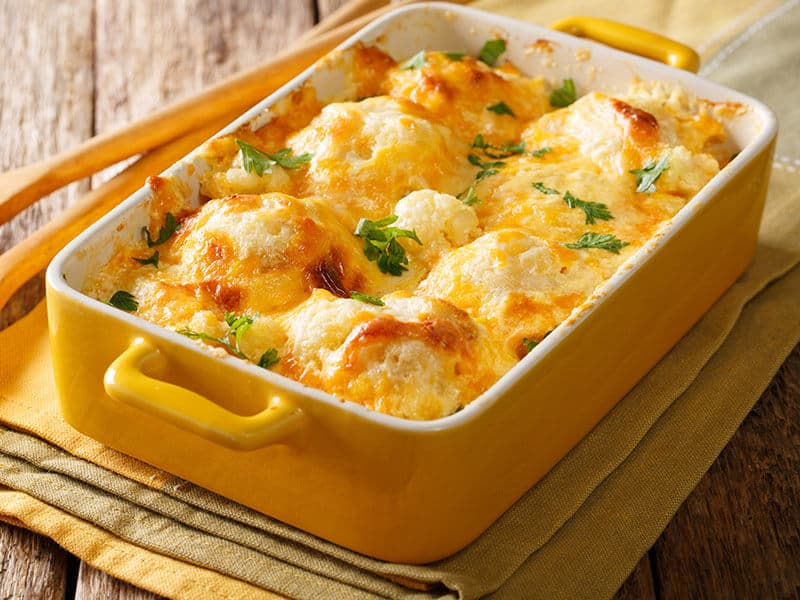
Cauliflower is a popular vegetable from the Brassicaceae family. It is one of the most common and healthiest veggies ever. The “cauliflower” name comes from the word “stems” or “flowers of cabbage” in Latin. It looks and tastes nearly like broccoli.
Cauliflower usually measures from 6 to 8 inches in diameter. There are many cauliflower varieties in the world. They vary in colors and each color of cauliflower tastes differently. The heads of cauliflower are used for culinary purposes and consumed in many ways.
You can find cauliflower in every dish, from every cuisine. It is so versatile that it can appear in anything. It can be boiled, fried, steamed, roasted, pickled, or even eaten raw! The thick stalks and the outer leaves of cauliflower are eliminated for better cooking.
Cauliflower may be a superfood in rice dishes, bread, flour, pizza crust, mashed or keto-friendly dishes. It is always preferred to cook in many meals requiring a special texture and versatile taste like cauliflower.(1)
The Special Taste Of Cauliflower You Should Know
Overall, the taste of cauliflower is mild and a bit neutral to describe. It can have a bitter note aftertaste and provides a crunchy and sharp texture. When it is cooked, this veggie turns out to be sweeter and nuttier than when it is raw.
Fresh cauliflower has a prominent and unique taste with a bitter flavor that can leave a mild note on your tongue. As I mentioned, cauliflower has many different versions with different colors. And their taste also varies, too. Below are the specific tastes of each type.
White Cauliflower
White cauliflower is the most typical species that you may think of when it comes to cauliflower. It has white heads of flower buds and green leaves around. It tastes stronger than other types and is most versatile in the cauliflower species.
Green Cauliflower
Green cauliflower looks much like broccoli, and it is even called broccoflower for its appearance. The taste of green cauliflower is also different from other species of cauliflower. It seems to taste milder and sweeter than the white ones.
The texture is also something different. Green cauliflower is more fibrous and similar to broccoli in texture.
Orange/Yellow Cauliflower
This special color of cauliflower has a beautiful orange and yellow color. The orange curds tend to be more intense when cooking. The orange or yellow cauliflowers are even healthier and tastier with a consistent flavor.
Compared to the white variety, it is creamier, milder, and sweeter. It tastes nothing like cheese, even though it is also called “cheddar” cauliflower.
Purple Cauliflower
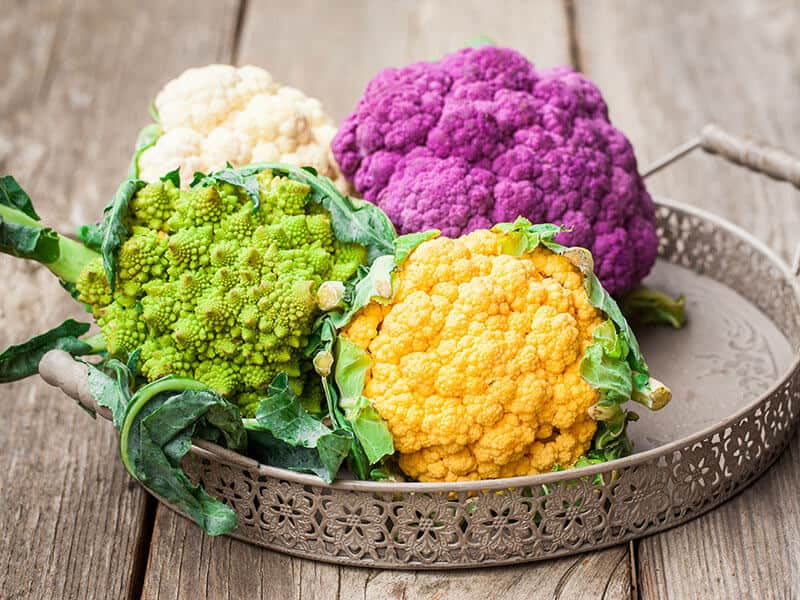
Purple cauliflower is the most vibrant and large veggie in cauliflower species. Its curd consists of a deep purple color that looks very beautiful from the outside. The heads of this purple variety are more tender and have a milder taste than the white.
It also tastes nuttier and sweeter and can be steamed, roasted, simmered just like other varieties. This is a good choice for those dishes that need an eye-catching and beautiful color.
Different Ways To Perfectly Cook Cauliflower
Cauliflower can be cooked in many different ways! You can serve them with dipping sauce or add them to a salad for an excellent side dish. It also tastes delicious when being cooked. Here are some typical cooking methods that you can use for your cauliflower.
But first, you need to prepare your cauliflower nicely. Cut off the outer leaves and stems, wash them carefully before getting them cooked in any dish.
Sautéeing
Put a frying pan on the stovetop and pour a bit of oil inside. Turn on the stovetop to medium-high heat. Chop your cauliflower into small pieces, then put all of them into the pan and stir them for 2 to 3 minutes. The whole process may take you from 5 to 15 minutes.
Sauteeing is a great and quick way to cook your cauliflower that can maintain its original nutrients and colors. You can also add some herbs or spices to get the best result! It will consist of a perfectly crunchy texture and flavorful taste once it is done.
Steaming
Steaming is like boiling the food but with a bit longer time. You can boil or steam your cauliflower and serve it with some dips.
Slice your prepared cauliflower into small pieces. Place a pot on the stovetop and pour water in. Put the cauliflower pieces into the pot and wait for 8 to 10 minutes. Check them regularly and when they are soft enough to your likings, take all of them out.
Frying
You can also deep-fry your cauliflower if you like! Set the deep fryer to 365 – 380oF. Slice the cauliflower into small pieces, then put them into the frying basket. Fry them until you can observe a golden brown color. Take them out and place them on paper towels to dry the oil.
Before deep-frying the cauliflower, you can blanch them in boiling water so that it can be fried faster. Serve the deep-fried cauliflower with some of your favorite sauces. Enjoy the most delicious snack ever while watching a movie with your family members!
Roasting
Prepare your cauliflower carefully and coat them with some olive oil and your favorite seasonings. Then put all of them on a baking tray and roast them at 425oF for about half an hour. Observe them until their edges become golden brown and crispy.
You can parboil the cauliflower beforehand to make sure they are thoroughly cooked inside when being roasted. If you don’t want to eat greasy deep-fried cauliflower, roasted ones are a great alternative!
Grilling
Grilling your cauliflower is quick and easy to do. Set your grill to medium heat, put the prepared cauliflower on, and brush them well with the marinade, which can include olive oil, lemon juice, parsley, honey, etc based on your likings.
Lift to the other side after 3 to 5 minutes and do the same as you do with the previous side. Grill for 3 to 5 minutes and they’re good to go. These grilled things are also called “cauliflower steaks” and can be served as a main dish or side dish.
Rice Cauliflower
You can make “rice cauliflower” by grating the prepared cauliflower and steaming them for some minutes. This can be a super healthy and low-in-carb substitute of usual rice. It is delectable with a good mixture of ingredients.
Learn some more exciting ways to cook your cauliflower!
Incredible Recipes To Go With Cauliflower
Cauliflower is a worldwide common veggie that can exist in any kitchen! There are also a lot of delectable recipes to cook with cauliflower.
Cauliflower Bolognese
Bolognese is now more special with the participation of cauliflower. It can include leftovers from your last night’s meal. Sliced cauliflower and mushroom blend well together and create a beautiful mixture that can please everyone’s taste buds!
The richness of this dish is also a highlight! And the sauce can be made perfectly with some simple ingredients, too. Try these bolognese recipes to amaze yourself and your family!
Creamy Cauliflower Gratin
This gratin recipe made of cauliflower is so creamy and smooth that it can melt directly in your mouth. The milky sauce is made from milk, which is a bit fatty to some people but a key part of this dish. Without the sauce, this recipe is not completed.
Bring your family together for dinner with this creamy cauliflower gratin! I’m sure that they will love this recipe, from the young to the old.
Vegan Buffalo Cauliflower Wings
This cauliflower-based dish looks so eye-catching with the bright, beautiful golden orange-brown color! This is great for vegetarians and can be served at a large party that includes some vegan friends!
Vegan buffalo cauliflower wings are also a fun snack to eat with your friends! They even have the taste of fried chicken that will surely surprise you a lot! Why don’t you try this recipe tonight?
How To Properly Store Your Cauliflower?
Now that you have purchased some fresh cauliflower, how can you store them so that they can last longer? Read more to find out! I believe that you will get some useful tips after this section!
| Storing Places | Fresh cauliflower |
| In the fridge | 3 – 5 days |
| In the freezer | 10 – 12 months |
In The Fridge
To store fresh cauliflower, you can wrap them in a plastic bag and put them in the refrigerator. Cauliflower does need air circulation, so you don’t need to tightly seal them. Make sure to keep your cauliflower stemless to avoid condensation on their heads.
You should not wash the cauliflower before putting them in the fridge. You should only wash them when you want to cook and serve them. If properly stored, your fresh cauliflower may last from 3 to 5 days in the fridge.
In The Freezer
To store cauliflower in the freezer, you may need to take a few more steps.
Step 1: First of all, prepare and cut off the hard stem of the cauliflower.
Step 2: Blanch them in boiling water. Wait for them to be blanched in 3 minutes, then take them out and sink them into ice water.
Step 3: After that, drain the cauliflower well. Place them on a sheet pan, freeze them for a few hours.
Step 4: Take them out, transfer them to freezer-safe bags.
Step 5: Put the prepared cauliflower bags back in the freezer for long-term storage.
Blanching is the key point of this method. If you do it correctly, cauliflower can stay in the freezer for 10 to 12 months. This is the best method to store your cauliflower for a long time!
To have a more concise look at storing cauliflower in the fridge, see how they properly store them!
How To Tell If Your Cauliflower Has Gone Bad?
Don’t know the signs telling that your cauliflower has gone bad and needs to be thrown away? I got something for you! These are the most obvious signs of rotten cauliflower that you need to be careful about.
It Smells Awkward
A sniff test is correct most of the time. Use your nose to recognize the bad smell from your cauliflower. If it smells weird, it is probably spoiled and needs to be discarded right away. You will notice the odd odor the first moment you put them near your nose.
It Consists Of Brown Spots
Rotten cauliflower will consist of brown and soft, mushy spots or mold on them. This is caused mostly by oxidation when it is not stored properly. It does need air circulation when storing, but the plastic wrap should also be a little bit tight.
If you see these brown spots, you can just cut them off and use the remaining parts. After that, you can also roast the cauliflower as usual.
It Has Soft Spots
The soft spots can be an obvious sign that your cauliflower is about to fall apart soon. This can happen when the moisture invades the cauliflower while storing. If it has those spots on them, get rid of them as soon as possible!
To prevent this, you should make some holes on the packaging if the cauliflower is sealed tightly; or you can just rewrap it and let it be looser. In these ways, the moisture can escape. You can eliminate the soft spots and use the rest for soups or purees.
It Develops Molds
This sign rarely happens in vegetables, but it does exist on improperly-stored cauliflower. If you see any sign of your cauliflower developing molds, just discard all of it. You can’t save it when some of it consists of molds.
It Looks Slimy
Another sign in the appearance that can point out the rotten cauliflower is that your cauliflower looks so slimy and has a liquid around it. But you can cut off only the slimy part and continue to use it when you don’t see any other unusual signs of bad cauliflower.
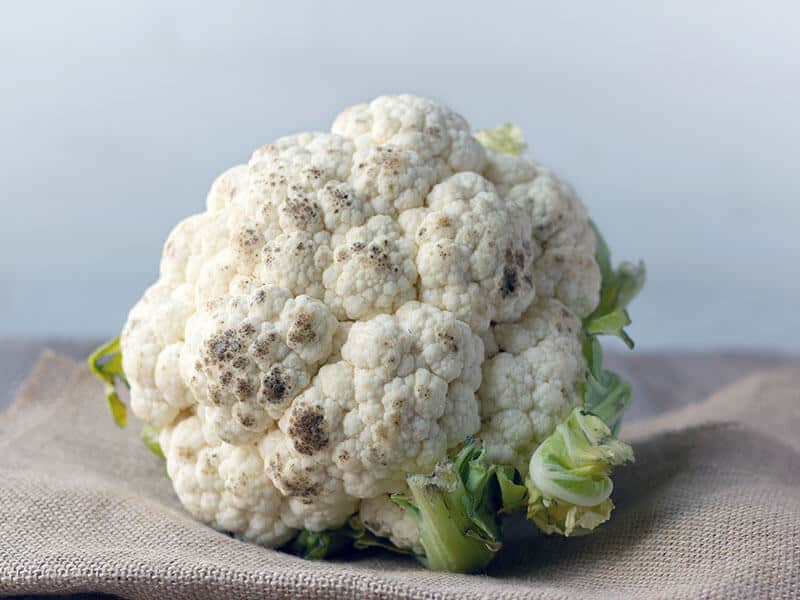
Amazing Health Benefits Of Cauliflower
As I mentioned, cauliflower is considered to be the healthiest vegetable. Health experts recognize their nutritional value. It includes abundant nutrients and minerals, such as vitamin B6, C, and K. It is also packed with fiber, manganese, magnesium, potassium, etc.
The high fiber content makes it excellent for your digestive health and helps you reduce the body’s inflammation. It can also prevent illnesses related to the digestive system. Moreover, cauliflower contains carotenoid and flavonoid antioxidants that include anti-cancer effects. (2)
There are many more benefits of cauliflower for you to explore, and the best way is to consume them right now! A great source of nutrients will be absorbed in your body immediately when you eat this fantastic veggie!
Want to know more about some health benefits of cauliflower? It is included in this video!
FAQs
Here are some more questions and answers for you to learn more about cauliflower as well as its taste and texture! If you have any further questions, don’t hesitate to leave a comment below this post!
Don’t Hesitate To Eat Cauliflower Anymore!
Cauliflower could be a nightmare for your childhood, but it is not that bad if you combine it with some of your favorite cooking methods and seasonings. Cook it tonight for your dinner and you won’t regret it!
Like, share this post, and subscribe to the newsletter to get more helpful information about culinary topics like this! Leave some comments so that I can know what you think about this article! See you soon with more exciting posts on culinary things! Love ya!
References
- En.wikipedia.org.. Cauliflower – Wikipedia.
- Healthline.. The Top 8 Health Benefits of Cauliflower.

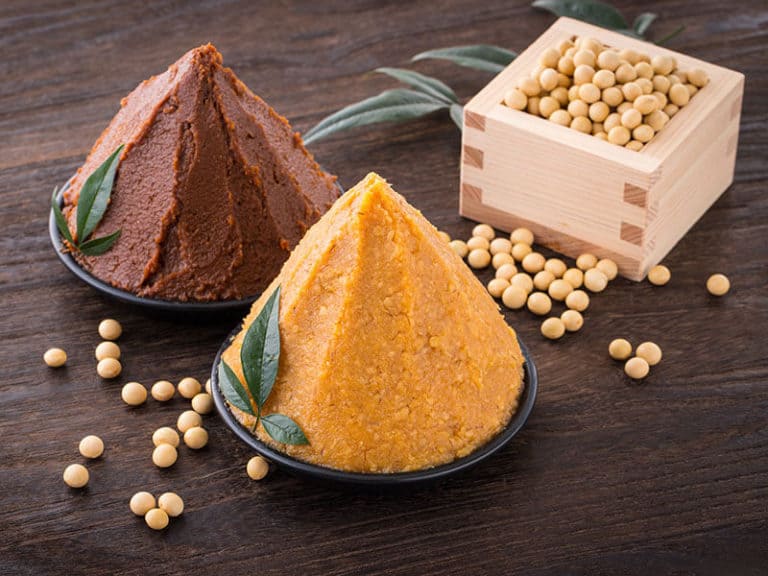
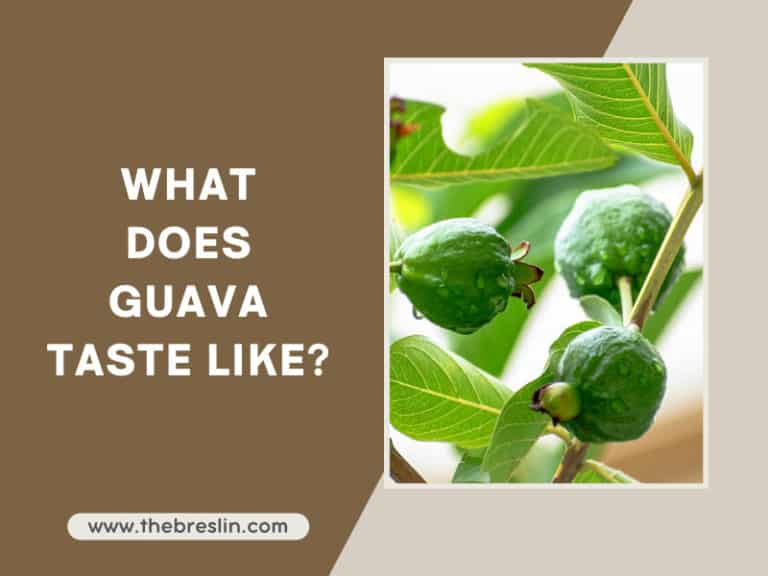

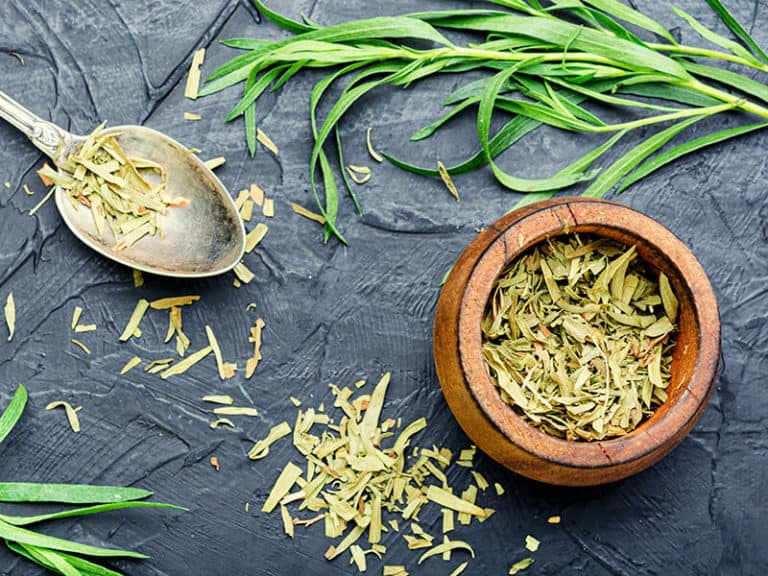
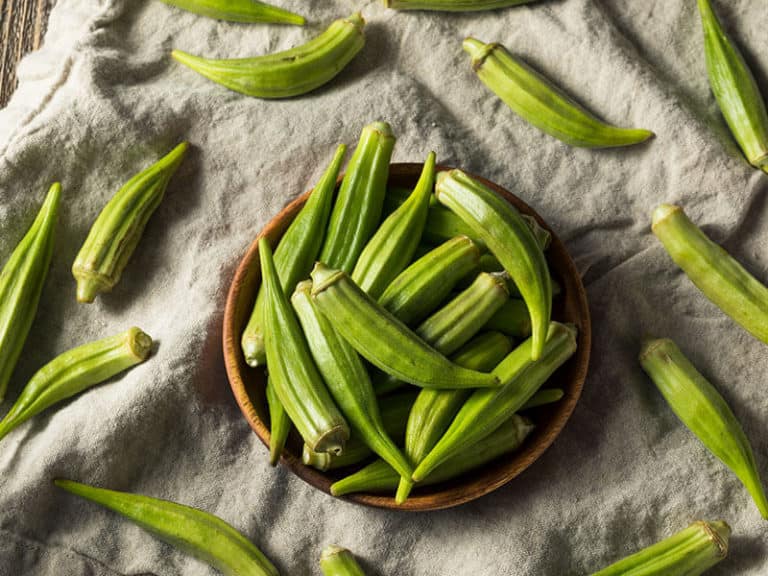
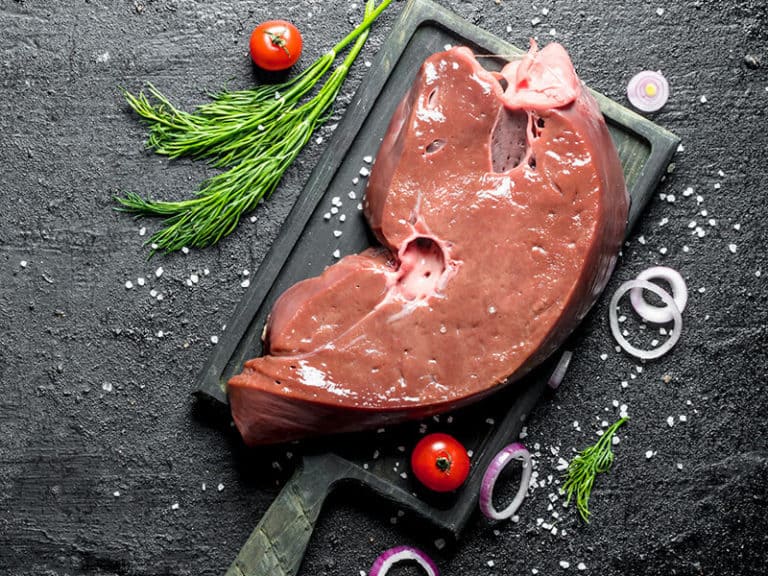
Amanda Collins
Founder and Senior Culinary Editor
Expertise
Culinary Arts and Management, Food Journalism and Critique, Recipe Development and Testing, Global Culinary Traditions, Sustainable Food Practices
Education
Institute of Culinary Education (ICE), New York, NY
Program: Diploma in Culinary Arts
Focus: Intensive hands-on training in culinary techniques, recipe development, and kitchen management, preparing students for professional roles in the culinary industry.
Monroe College, New Rochelle, NY
Program: Associate in Applied Science in Culinary Arts
Focus: Practical culinary skills, including cooking techniques, menu planning, and kitchen operations, with an emphasis on hands-on experience and industry standards.
Amanda Collins is a seasoned chef and food editor with a deep love for global flavors. Trained at the Institute of Culinary Education and Monroe College, and with over 15 years in the culinary field, Amanda has refined her skills in kitchens worldwide. Her background in food studies gives her a unique ability to share both recipes and the cultural stories that shape them.
As senior culinary editor at thebreslin.com, Amanda’s work brings authentic dishes to life, inviting readers to explore new flavors and techniques from around the globe. Her approachable style makes it easy for anyone to bring a bit of the world’s cuisine into their kitchen.